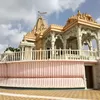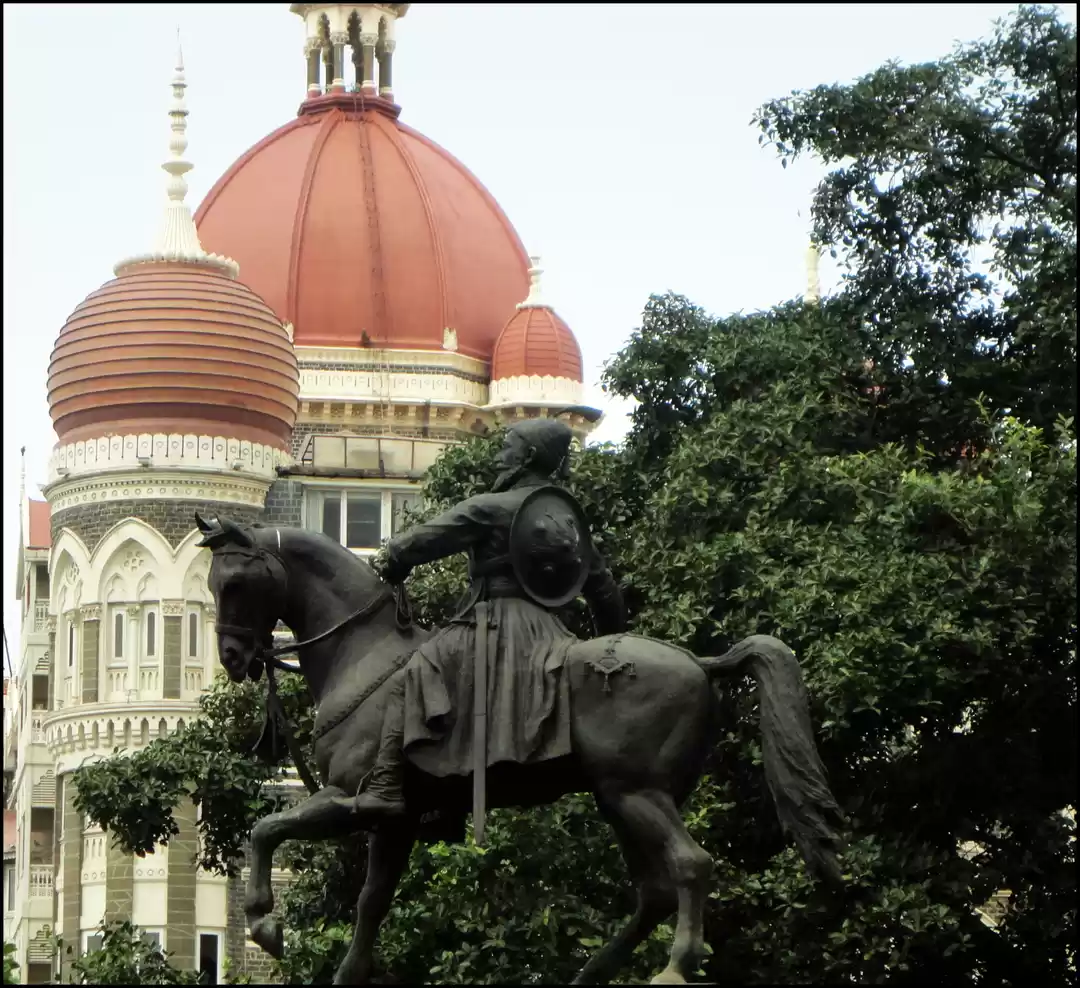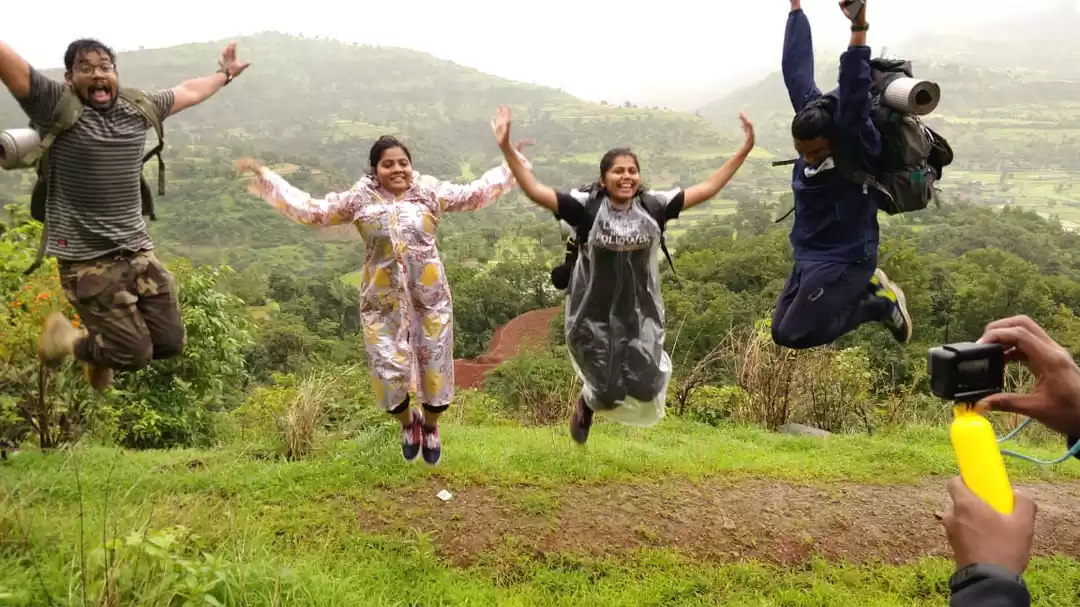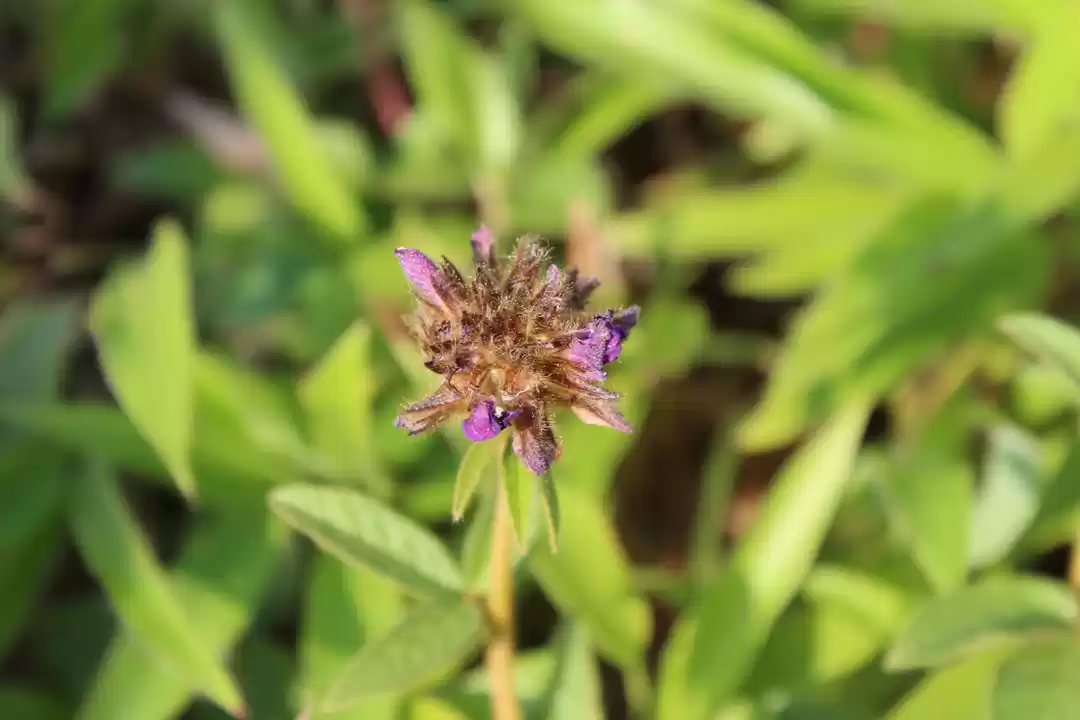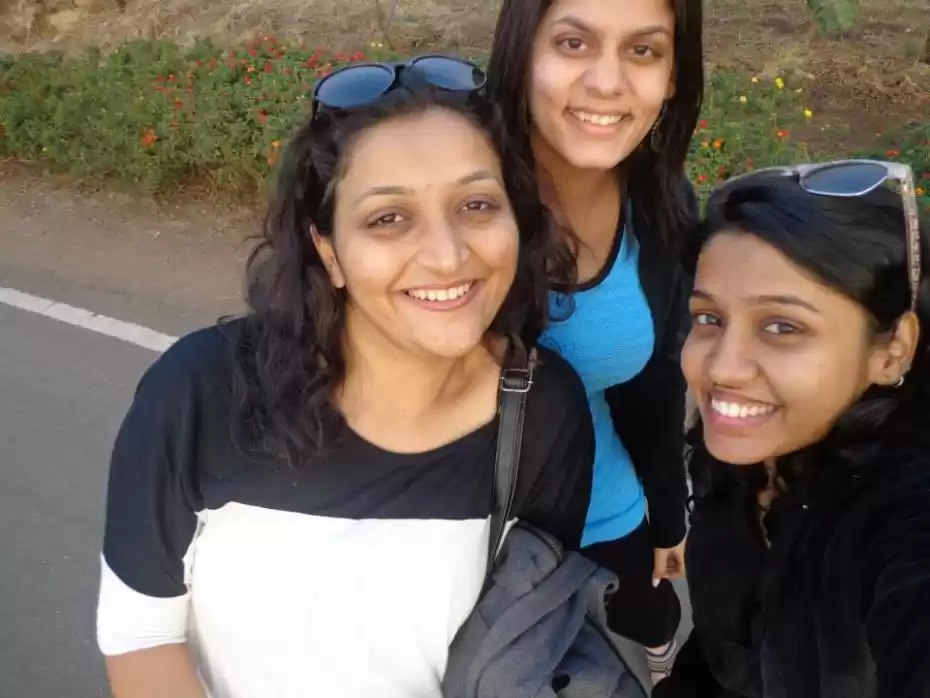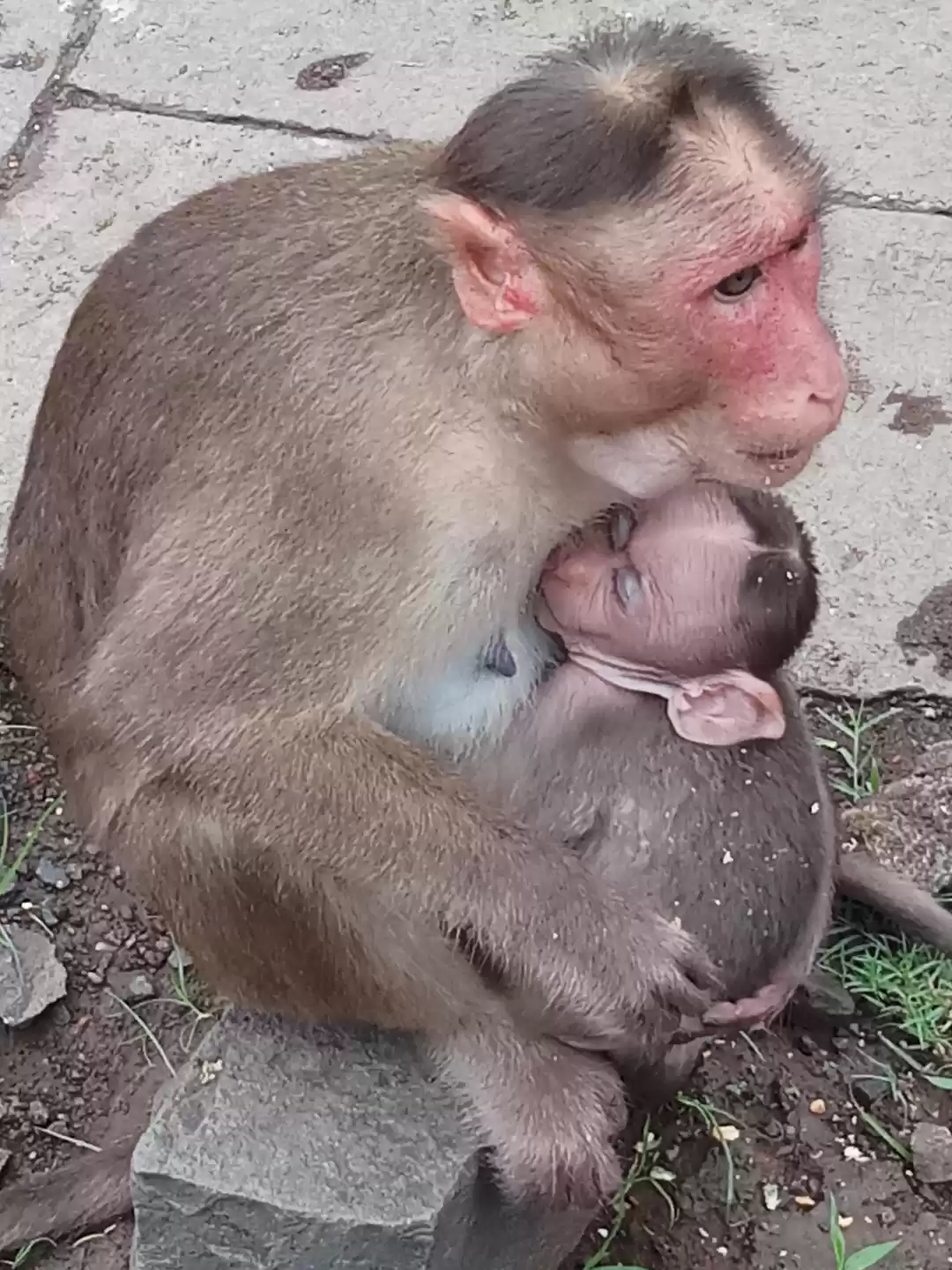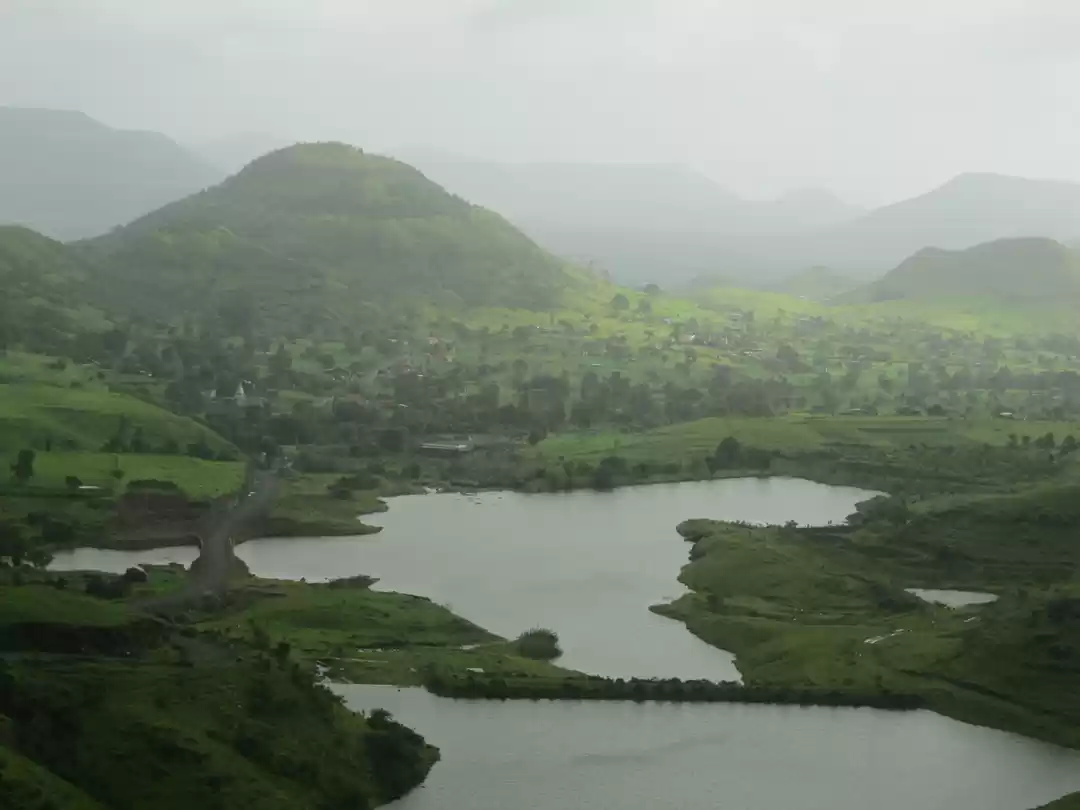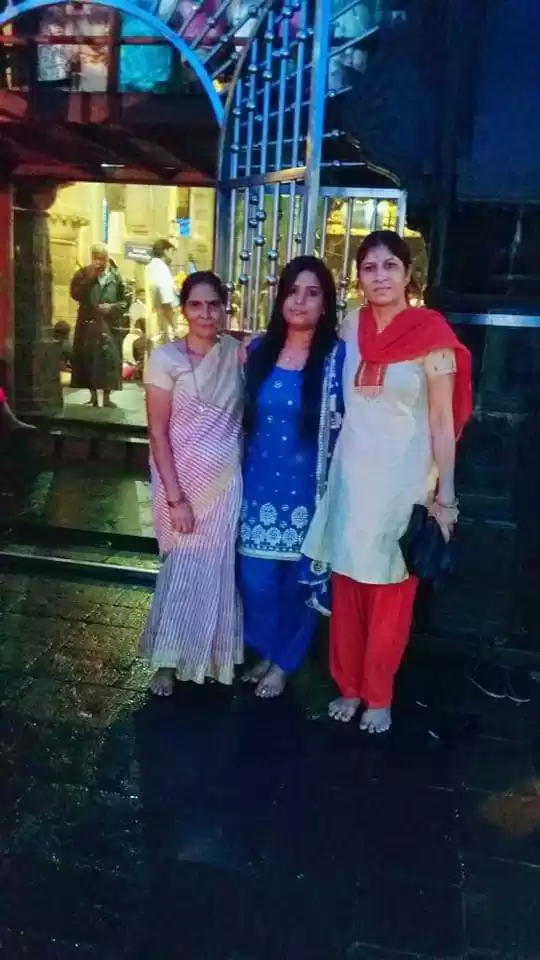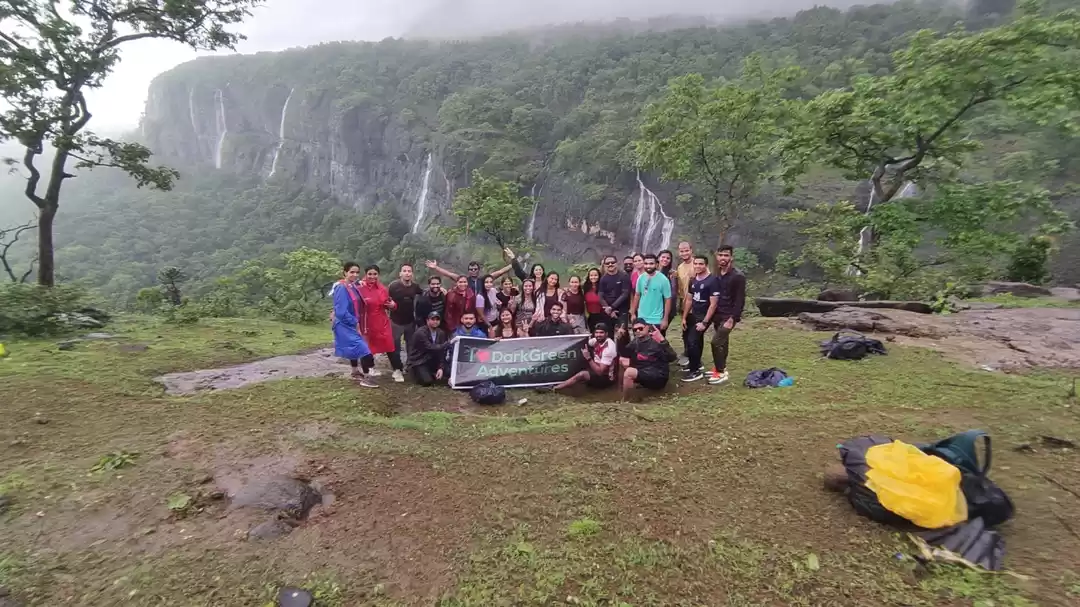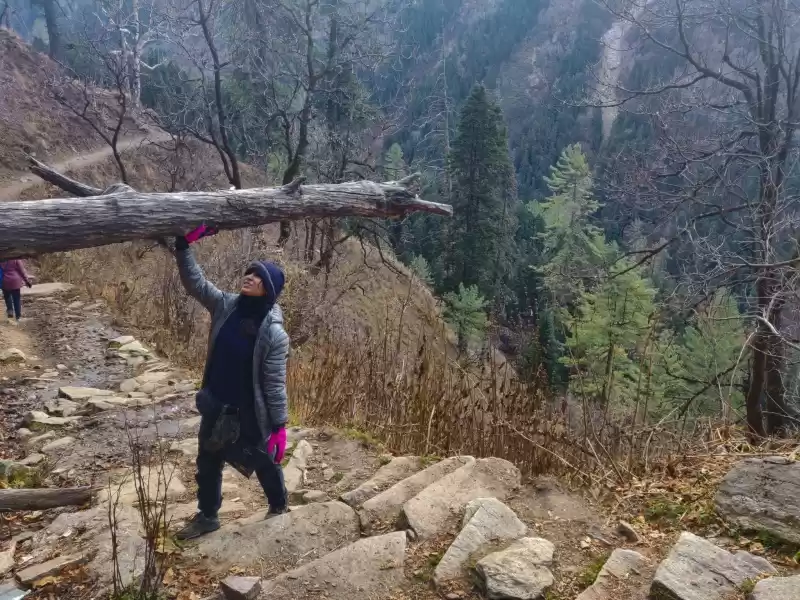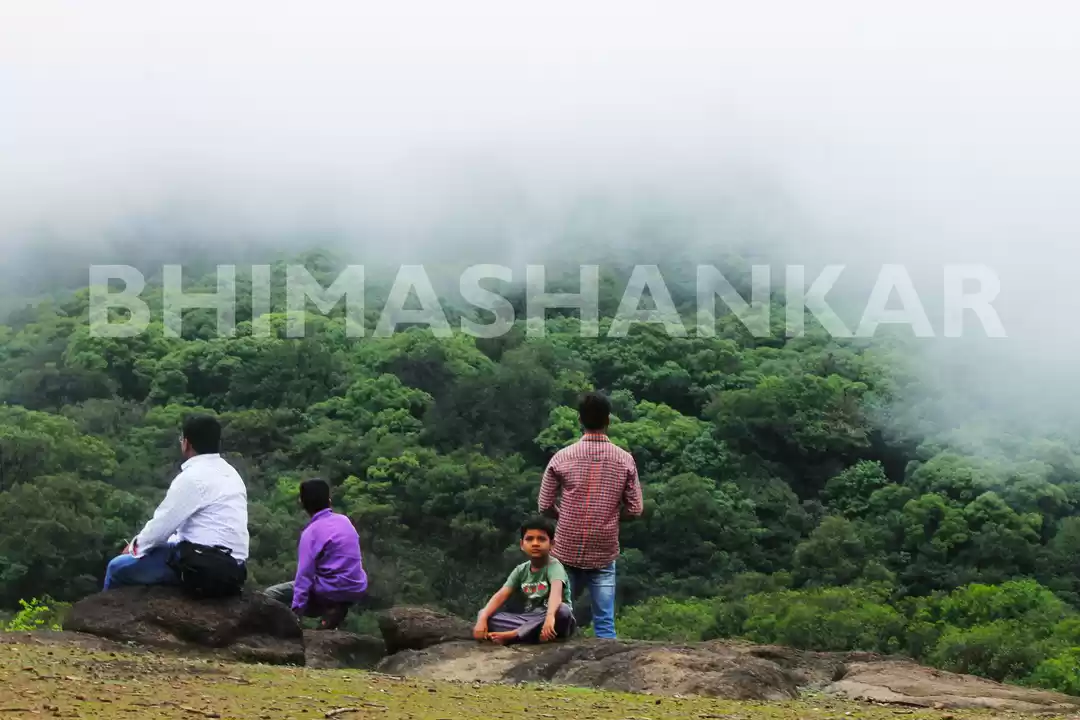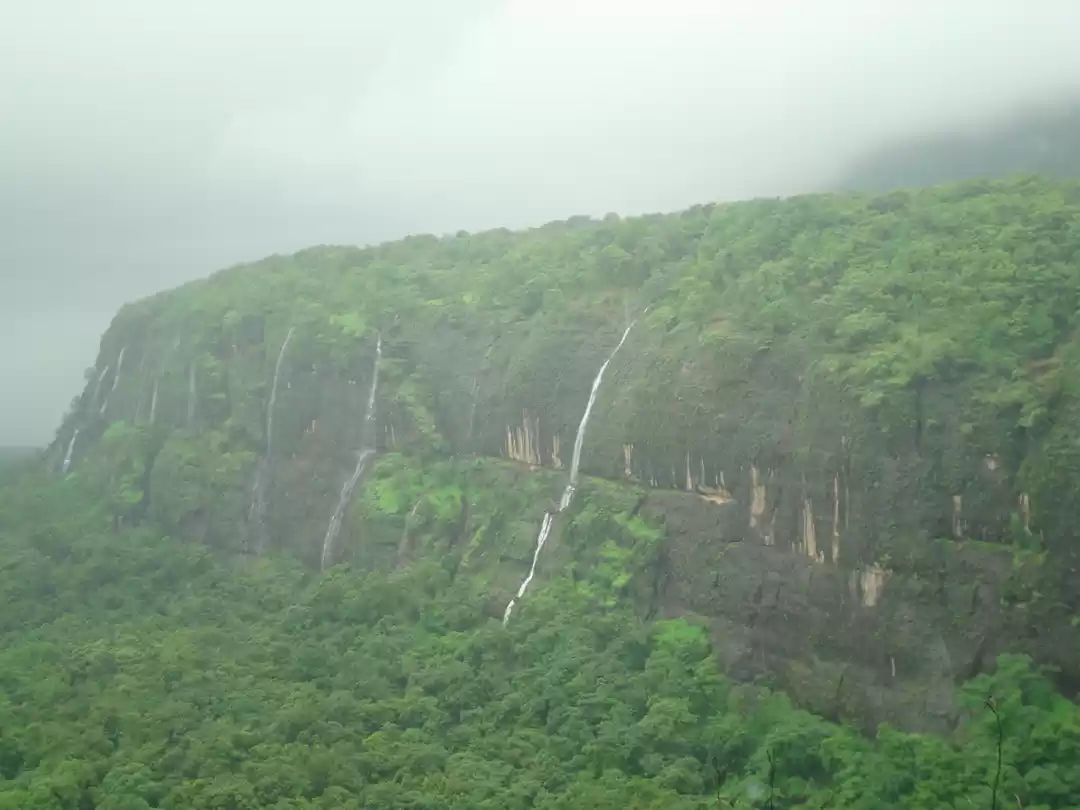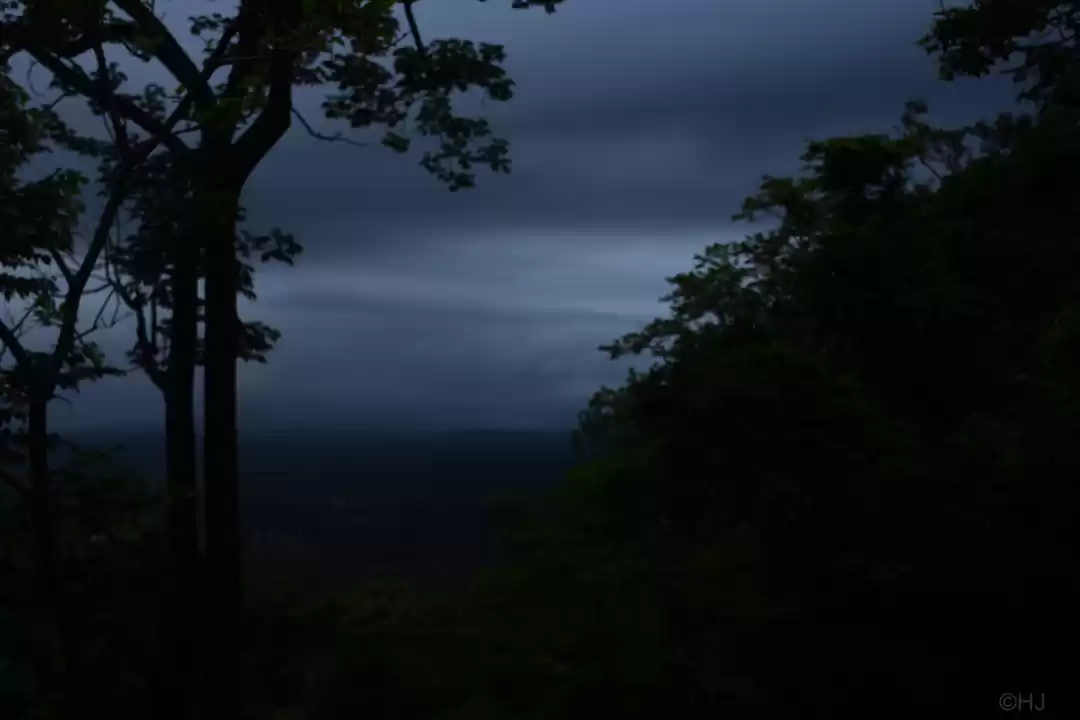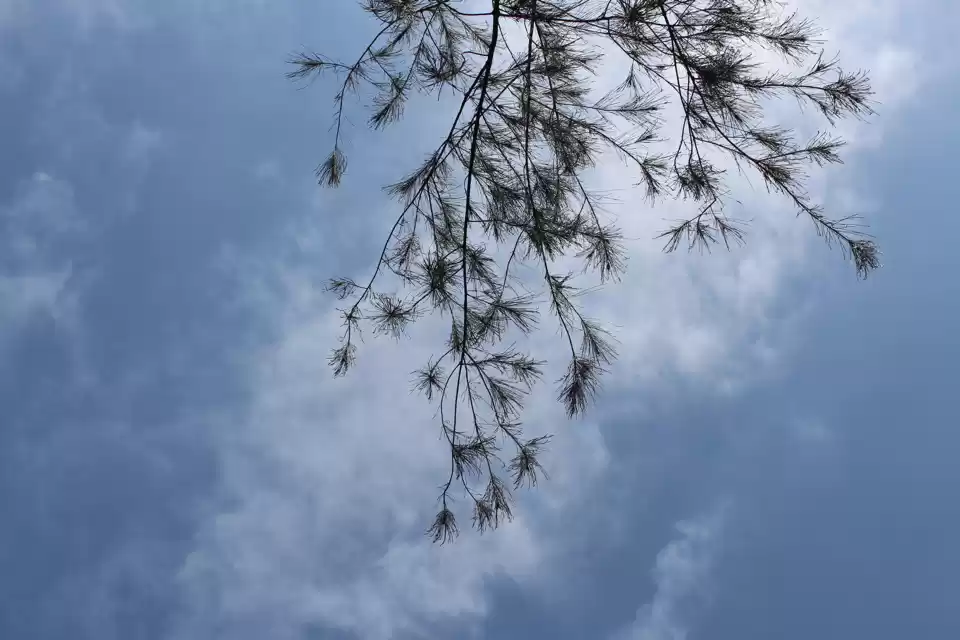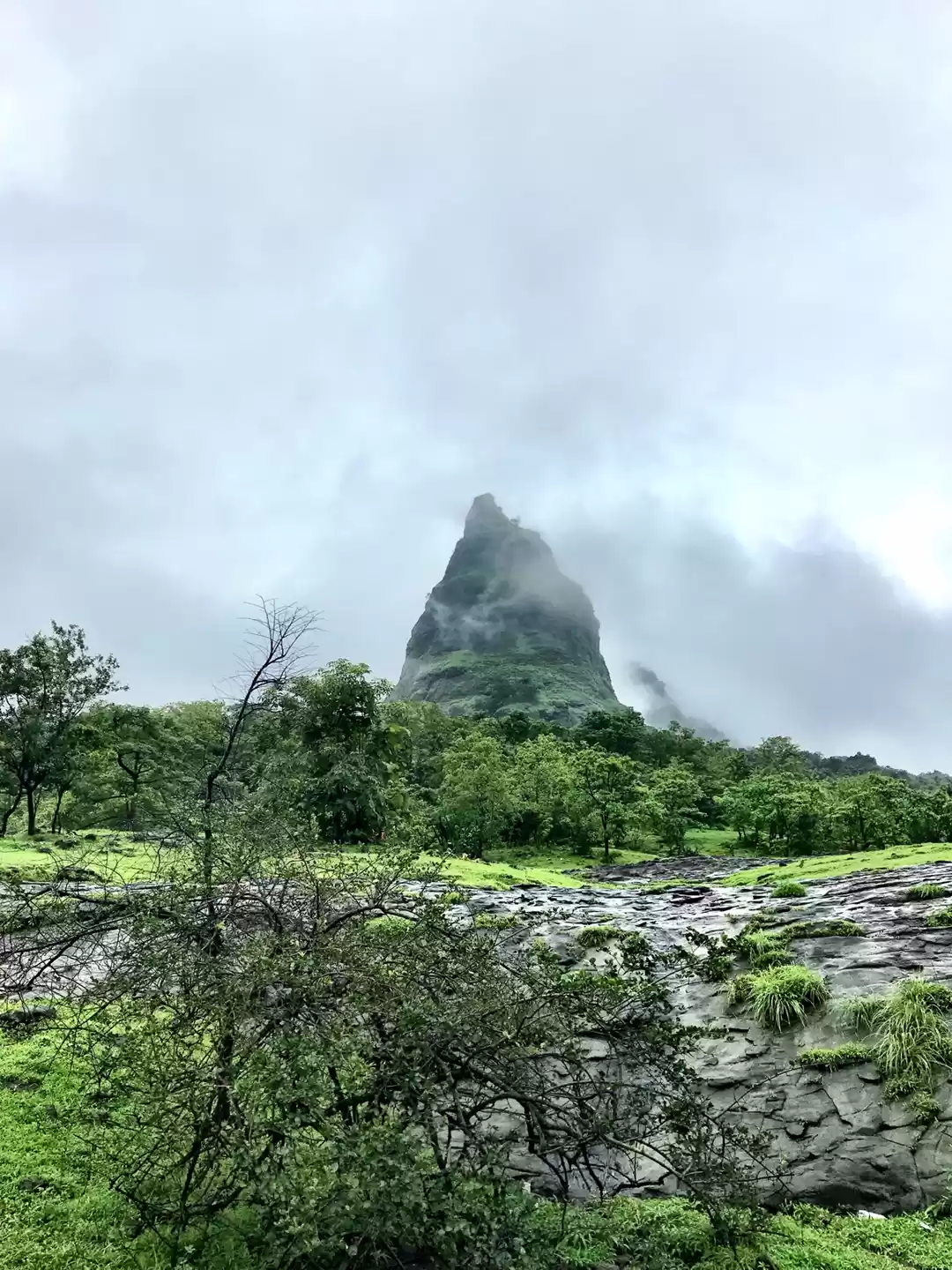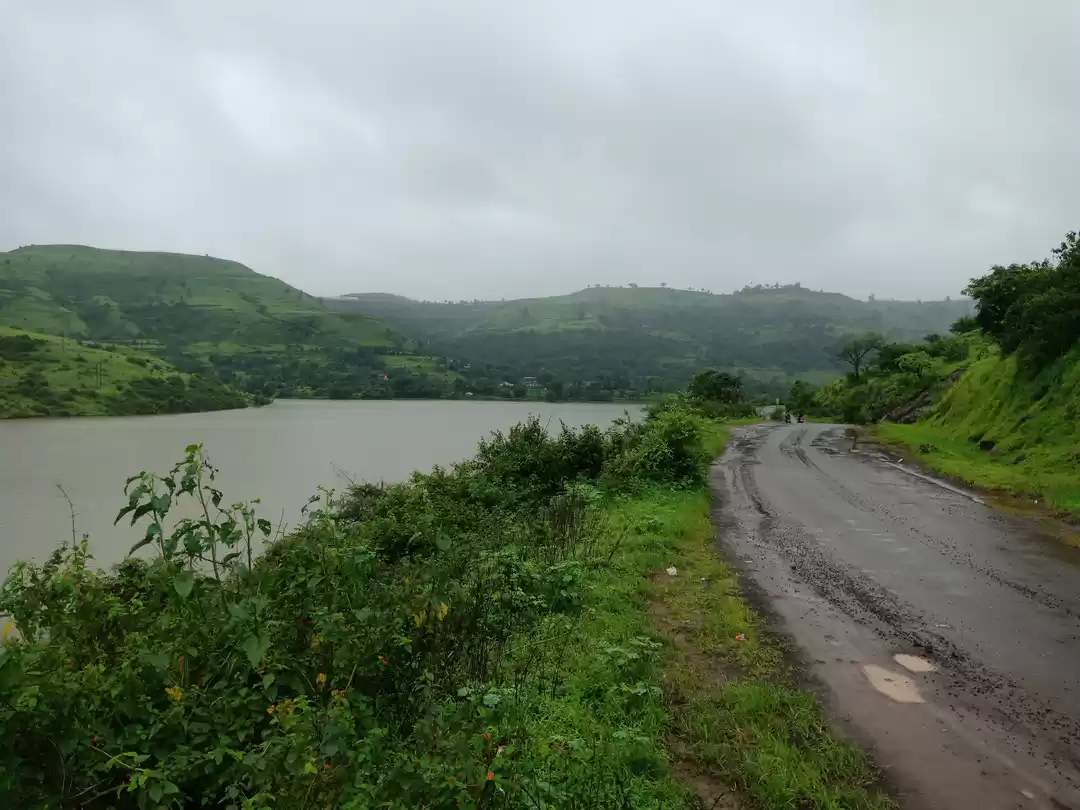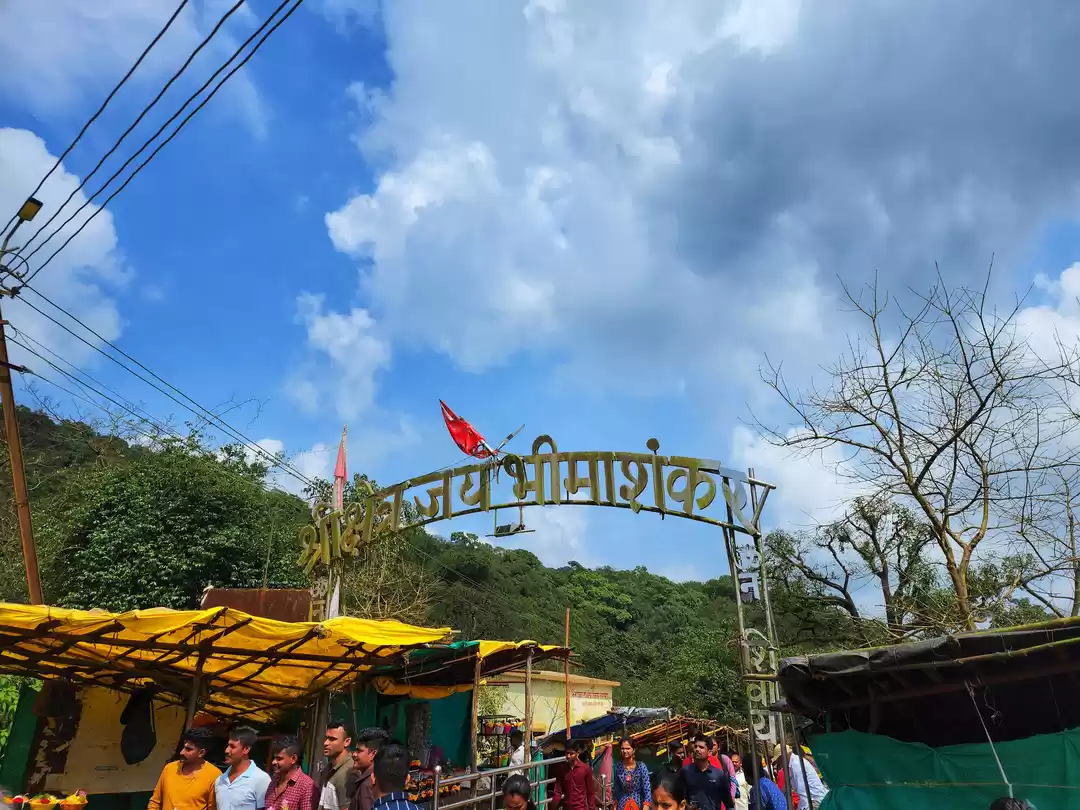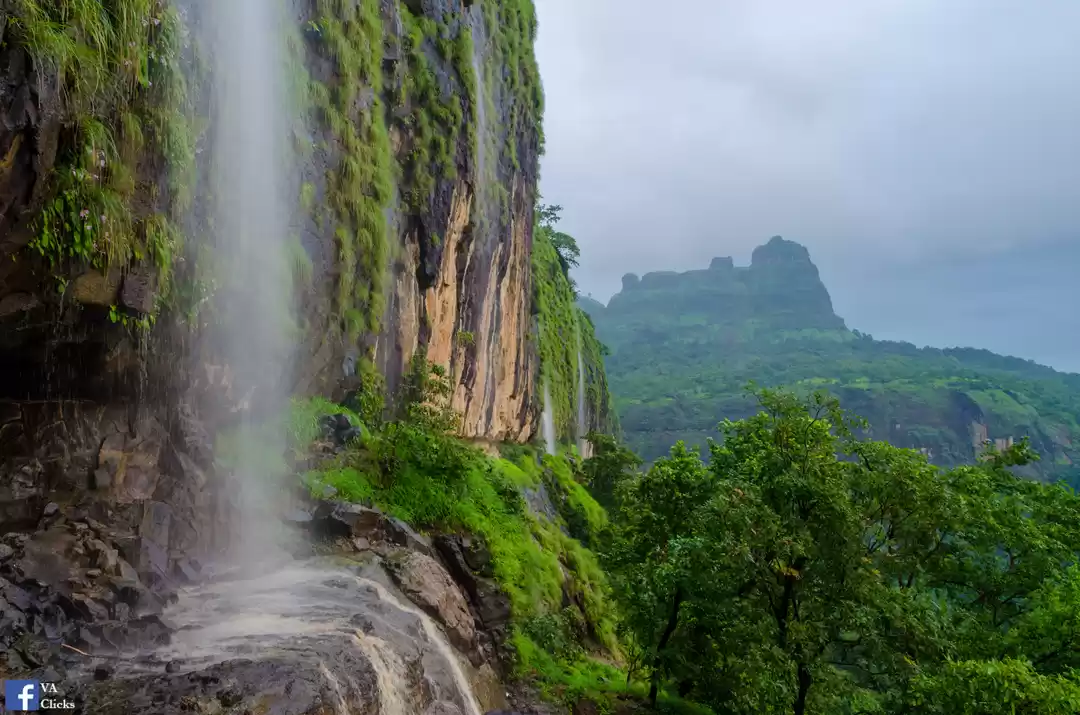Are you looking for a spiritual and scenic getaway in India? Do you want to visit one of the most sacred and ancient temples of Lord Shiva? If yes, then you should definitely plan a trip to Bhimashankar Temple, a Jyotirlinga shrine located in the Sahyadri hills of Maharashtra.
Bhimashankar Temple is one of the 12 Jyotirlingas of Lord Shiva, which are considered to be the most powerful manifestations of the supreme deity. The temple is also a UNESCO World Heritage Site and a biodiversity hotspot, as it is surrounded by the Bhimashankar Wildlife Sanctuary.
In this article, we will tell you everything you need to know about Bhimashankar Temple, such as its history, significance, architecture, festivals, poojas, and how to reach it. We will also give you some tips and recommendations on where to stay and what to see near the temple. By the end of this article, you will be ready to embark on a memorable and enriching journey to Bhimashankar Temple.
History of the Temple
The history of Bhimashankar Temple dates back to thousands of years ago, when Lord Shiva appeared as a fiery pillar of light (Jyotirlinga) to destroy the evil demon Tripurasura.
According to legend, Tripurasura had obtained three flying cities (Tripura) from Lord Brahma after performing severe penance. He then used these cities to wreak havoc on the gods and humans. Lord Shiva was the only one who could destroy Tripura with his arrow, but he needed a suitable bow for that. He took the help of Lord Vishnu, who transformed himself into a mountain (Meru) and a bowstring (Vasuki). Lord Shiva then shot his arrow from Meru and Vasuki and destroyed Tripura with a single shot. The impact of the arrow was so immense that it created a huge crater on the earth, where Bhimashankar Temple now stands.
The temple was first built by King Karna of the Chalukya dynasty in the 6th century CE. It was later renovated and expanded by various rulers and dynasties over the centuries, such as the Rashtrakutas, the Yadavas, the Marathas, and the Peshwas. The temple also received patronage from several saints and devotees, such as Nana Fadnavis, Raghunath Peshwa, Jangli Maharaj, and Sai Baba of Shirdi. The temple has witnessed many historical events and battles, such as the invasion of Malik Kafur in 1312 CE, the revolt of Shivaji Maharaj against Aurangzeb in 1674 CE, and the Anglo-Maratha War in 1818 CE.
Significance of the Temple
Bhimashankar Temple is not only a historical marvel but also a spiritual treasure. The temple is one of the 12 Jyotirlingas of Lord Shiva, which are considered to be the most powerful manifestations of the supreme deity. According to Hindu scriptures, visiting a Jyotirlinga can grant salvation (moksha) to anyone who worships with devotion and sincerity.
The temple is also one of the five Jyotirlingas in Maharashtra, along with Trimbakeshwar near Nashik, Grishneshwar near Aurangabad, Aundha Nagnath near Hingoli, and Parli Vaijnath near Beed. These five Jyotirlingas form a sacred circuit (Pancha Jyotirlinga) that attracts millions of pilgrims every year.
The temple is also one of the eight Ashta Vinayak temples in Maharashtra, which are dedicated to Lord Ganesha, the elephant-headed god of wisdom and success. The temple has a small shrine of Lord Ganesha, who is worshipped as Ballaleshwar, the lord of Ballal, a young devotee who was blessed by Lord Ganesha for his faith and devotion.
The temple is also one of the 51 Shakti Peethas in India, which are the places where the body parts of Goddess Sati fell after she immolated herself in the fire of her father’s yagna. The temple has a shrine of Goddess Parvati, who is worshipped as Kamalaja, the lotus-born goddess. She is believed to have helped Lord Shiva in his battle against Tripurasura by taking the form of a bee (Bhramari) and stinging the demon’s eyes.
The temple is also one of the 12 Jyotir Lingas in India, which are the places where Lord Shiva performed his cosmic dance (Tandava) and created the universe. The temple has a statue of Lord Shiva in his dancing pose (Nataraja), which symbolizes his power and grace.
The temple is also one of the 108 Shiva Temples in India, which are the places where Lord Shiva manifested himself in various forms and performed various miracles. The temple has a lingam (phallic symbol) of Lord Shiva, which is made of black stone and has a silver coating. The lingam is adorned with flowers, sandalwood paste, vermilion, and bilva leaves. The lingam is also said to have a swayambhu (self-manifested) feature, which means that it emerged from the earth on its own.
Architecture of the Temple
Bhimashankar Temple is a masterpiece of architecture and art. The temple reflects the styles and influences of various periods and cultures, such as the Nagara, Hemadpanthi, Indo-Aryan, and Maratha. The temple has a complex and intricate design that showcases the skill and craftsmanship of its builders and sculptors.
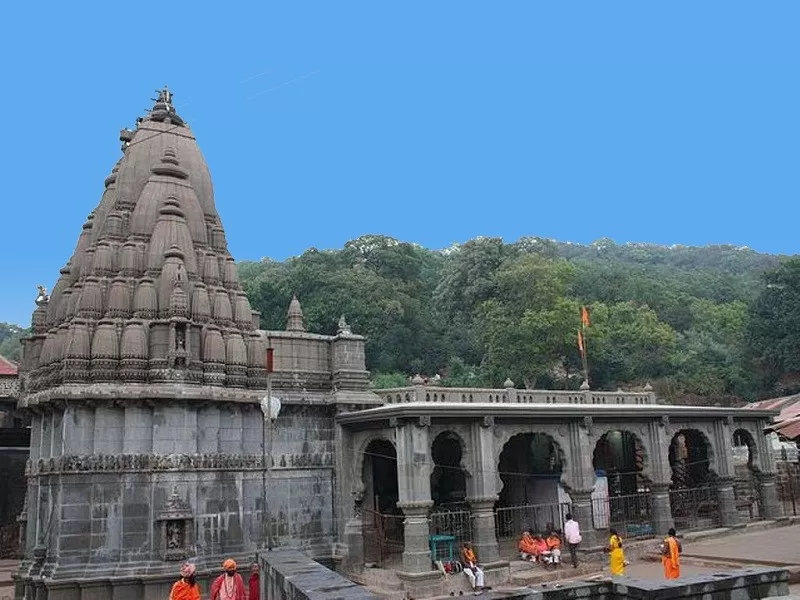
The temple has four main parts: the garbhagriha (sanctum sanctorum), the antarala (vestibule), the sabhamandapa (assembly hall), and the shikhar (spire). The garbhagriha houses the lingam of Lord Shiva, which is the main object of worship. The antarala connects the garbhagriha with the sabhamandapa, which is a large hall with pillars and arches. The sabhamandapa has several shrines dedicated to other deities, such as Lord Ganesha, Goddess Parvati, Lord Shanmukha, Lord Nandi, etc. The shikhar is a tall tower that rises above the garbhagriha and has a kalash (pot) at its top.
Festivals celebrated at the Temple
Bhimashankar Temple is a hub of festivity and celebration throughout the year. The temple hosts many festivals and events that attract thousands of devotees and visitors from all over India and abroad. Some of the major festivals celebrated at the temple are:
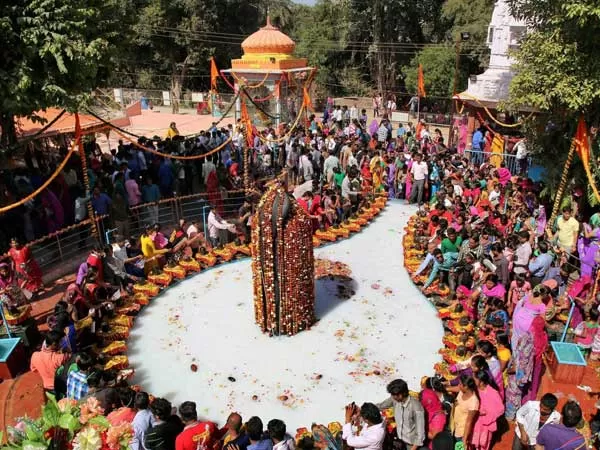
Maha Shivaratri:
This is the most important festival celebrated at the temple. It falls on the 14th day of the dark fortnight in the month of Phalguna (February-March). It marks the anniversary of Lord Shiva’s manifestation as Jyotirlinga at Bhimashankar. On this day, devotees observe fasts, offer prayers, perform abhishekams (ritual baths), chant mantra (hymns), and participate in cultural programs.
The temple is decorated with lights, flowers, and flags. The temple also conducts a special pooja called Rudra Abhishekam, which involves offering milk, honey, curd, ghee, sugar, and water to the lingam of Lord Shiva. The highlight of the festival is the Mahashivaratri Rath Yatra, which is a grand procession of the idol of Lord Shiva on a chariot around the temple premises.
Shravan Maas:
This is another auspicious festival celebrated at the temple. It falls in the month of Shravan (July-August), which is dedicated to Lord Shiva. During this month, devotees visit the temple every Monday and offer bilva leaves, flowers, fruits, and water to the lingam of Lord Shiva. They also wear rudraksha beads, which are considered sacred by Lord Shiva. The temple also organizes a special pooja called Laghu Rudra Abhishekam, which involves offering 11 ingredients to the lingam of Lord Shiva. The devotees also perform a ritual called Kanwar Yatra, which involves carrying water from the Chandrabhaga River in pots and offering it to the lingam of Lord Shiva.
Ganesh Chaturthi:
This is a popular festival celebrated at the temple. It falls on the fourth day of the bright fortnight in the month of Bhadrapada (August-September). It marks the birthday of Lord Ganesha, the son of Lord Shiva and Goddess Parvati. On this day, devotees worship the idol of Lord Ganesha at the temple and offer modaks (sweet dumplings), coconut, and durva grass to him.
They also sing songs, dance, and play games in his honor. The temple also conducts a special pooja called Sahastravartan Abhishekam, which involves offering 1008 ingredients to the idol of Lord Ganesha. The festival ends with the immersion of the idol of Lord Ganesha in the Chandrabhaga River.
Kartik Maas:
This is a sacred festival celebrated at the temple. It falls in the month of Kartik (October-November), which is considered to be the most favorable month for worshipping Lord Shiva. During this month, devotees visit the temple every day and offer oil lamps, incense sticks, flowers, and water to the lingam of Lord Shiva. They also recite the Shiv Puran (a holy scripture about Lord Shiva) and perform aarti (a ritual of waving lamps) to him.
The temple also organizes a special pooja called Maha Rudra Abhishekam, which involves offering 121 ingredients to the lingam of Lord Shiva. The devotees also perform a ritual called Deep Daan, which involves donating oil lamps to the temple.
Poojas and Rituals at the Temple
Bhimashankar Temple is a place where devotees can perform various poojas and rituals to seek the blessings of Lord Shiva and other deities. The temple offers various types of poojas and rituals that can be performed by anyone who wishes to do so. Some of the common poojas and rituals performed at the temple are:
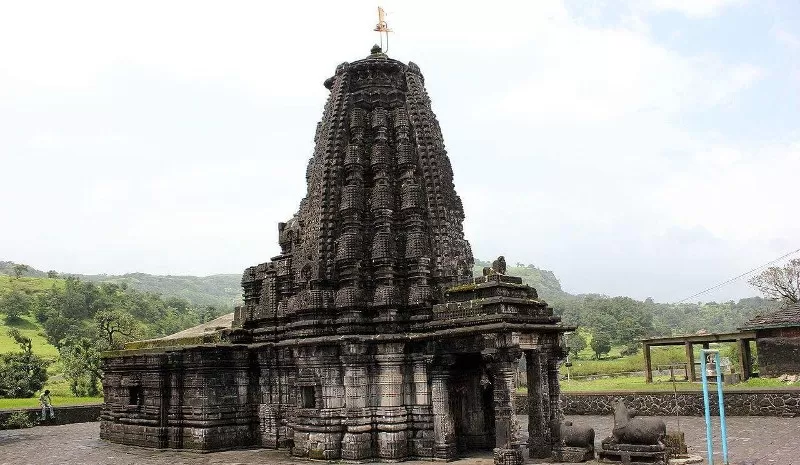
Abhishekam: This is a ritual that involves offering various liquids such as milk, honey, curd, ghee, sugar, and water to the lingam or idol of Lord Shiva or other deities. The abhishekam can be performed with different numbers of ingredients depending on the type and purpose of the pooja. For example, Rudra Abhishekam involves offering 11 ingredients, Laghu Rudra Abhishekam involves offering 121 ingredients, Maha Rudra Abhishekam involves offering 1008 ingredients, etc. The abhishekam can be performed for various reasons such as seeking health, wealth, happiness, success, protection, etc.
Archana: This is a ritual that involves reciting various names and mantras (sacred sounds) of Lord Shiva or other deities while offering flowers or other items to them. The archana can be performed with different numbers of names depending on the type and purpose of the pooja. For example, Ashtottara Archana involves reciting 108 names, Sahasranama Archana involves reciting 1000 names, etc. The archana can be performed for various reasons such as seeking peace, harmony, love, wisdom, etc.
Aarti: This is a ritual that involves waving lamps or candles in front of the lingam or idol of Lord Shiva or other deities while singing hymns or songs in their praise. The aarti can be performed at different times depending on the type and purpose of the pooja. For example, Mangala Aarti is performed in the morning, Sandhya Aarti is performed in the evening, Shej Aarti is performed at night, etc. The aarti can be performed for various reasons such as expressing gratitude, devotion, joy, etc.
The temple also offers various other poojas and rituals that can be performed by the devotees, such as:
Pradakshina: This is a ritual that involves circumambulating the lingam or idol of Lord Shiva or other deities in a clockwise direction while chanting mantras or prayers. The pradakshina can be performed with different numbers of rounds depending on the type and purpose of the pooja. For example, one round, three rounds, seven rounds, etc. The pradakshina can be performed for various reasons such as seeking forgiveness, purification, fulfillment, etc.
Pran Pratishtha: This is a ritual that involves installing a new lingam or idol of Lord Shiva or other deities at the temple or at home. The pran pratishtha can be performed by a priest or by the devotee himself/herself with the help of a priest. The pran pratishtha involves various steps such as cleansing, consecrating, invoking, and worshipping the lingam or idol. The pran pratishtha can be performed for various reasons such as establishing a connection, honoring, dedicating, etc.
Rudra Homam: This is a ritual that involves offering various items such as ghee, rice, herbs, fruits, etc. to a sacred fire while reciting mantras or prayers dedicated to Lord Shiva or other deities. The rudra homam can be performed with different numbers of items depending on the type and purpose of the pooja.
For example, Ekadasha Rudra Homam involves offering 11 items, Laghu Rudra Homam involves offering 121 items, Maha Rudra Homam involves offering 1008 items, etc. The rudra homam can be performed for various reasons such as seeking prosperity, protection, liberation, etc.
The temple also provides online booking facilities for the devotees who want to perform any of these poojas and rituals at the temple. The devotees can visit the official website of the temple and fill up an online form with their details and preferences.
Getting There
Bhimashankar Temple is well-connected by various modes of transport from different parts of India and abroad. Here are some of the ways to reach the temple by road/rail/air:
By Road:
Bhimashankar Temple is located about 110 km from Pune and 220 km from Mumbai by road. There are many state-run and private buses that ply regularly between these cities and Bhimashankar. The bus fare ranges from Rs. 200 to Rs. 500 depending on the type and class of the bus. The bus journey takes about 3 to 4 hours from Pune and 5 to 6 hours from Mumbai.
By Car/Taxi:
Bhimashankar Temple can also be reached by car or taxi from Pune or Mumbai. There are many car rental services and taxi operators that offer comfortable and convenient rides to Bhimashankar. The car/taxi fare ranges from Rs. 2500 to Rs. 4000 depending on the type and size of the car/taxi. The car/taxi journey takes about 2 to 3 hours from Pune and 4 to 5 hours from Mumbai.
By Rail:
Bhimashankar Temple does not have a railway station of its own. The nearest railway station is Pune Junction, which is about 100 km from the temple. Pune Junction is well-connected by trains from various parts of India, such as Delhi, Mumbai, Bangalore, Chennai, Hyderabad, etc.
The train fare ranges from Rs. 100 to Rs. 2000 depending on the type and class of the train. The train journey takes about 2 to 3 hours from Mumbai and 10 to 12 hours from Delhi. From Pune Junction, one can take a bus, car, or taxi to reach Bhimashankar Temple.
By Air:
Bhimashankar Temple does not have an airport of its own. The nearest airport is Pune International Airport, which is about 120 km from the temple. Pune International Airport is well-connected by flights from various domestic and international destinations, such as Delhi, Mumbai, Bangalore, Chennai, Hyderabad, Dubai, Singapore, etc.
The flight fare ranges from Rs. 2000 to Rs. 20000 depending on the type and class of the flight. The flight journey takes about an hour from Mumbai and 2 hours from Delhi. From Pune International Airport, one can take a bus, car, or taxi to reach Bhimashankar Temple.
Feeling Adventurous? Discover Zain Ali’s thrilling trek to Bhimshankar and see how he conquered the challenging trails!
Hotels near the Temple
Bhimashankar Temple is a popular pilgrimage destination that attracts many visitors throughout the year. There are many hotels and resorts near the temple that offer comfortable and convenient accommodation options for the visitors. Some of the recommended hotels and resorts near the temple are:

Blue Mormon Jungle Holiday Resort:
This is a luxury resort that is located about 5 km from the temple. It offers spacious and well-furnished rooms and cottages with modern amenities such as AC, TV, Wi-Fi, etc. It also has a restaurant, a swimming pool, a spa, a gym, a garden, and a playground. The resort also organizes various activities such as trekking, birdwatching, camping, etc. The price range for the rooms and cottages is Rs. 4000 to Rs. 6000 per night.
Hotel Sai Leela:
This is a budget hotel that is located about 2 km from the temple. It offers cozy and clean rooms with basic amenities such as fan, TV, Wi-Fi, etc. It also has a restaurant, a parking lot, a travel desk, and a power backup. The hotel also provides free shuttle service to and from the temple. The price range for the rooms is Rs. 1000 to Rs. 2000 per night.
Hotel Shivshakti:
This is an economy hotel that is located about 1 km from the temple. It offers decent and affordable rooms with essential amenities such as fan, TV, Wi-Fi, etc. It also has a restaurant, a parking lot, a travel desk, and a power backup. The hotel also provides free shuttle service to and from the temple. The price range for the rooms is Rs. 500 to Rs. 1000 per night.
Places to visit near the Temple
Bhimashankar Temple is not only a spiritual destination but also a scenic destination that offers many places to visit near the temple. Some of the places to visit near the temple are:

Bhimashankar Wildlife Sanctuary:
This is a wildlife sanctuary that covers an area of about 131 sq km around the temple. It is home to various species of flora and fauna such as leopards, barking deer, giant squirrels, monkeys, eagles, woodpeckers, orchids, ferns, etc. It is also a popular spot for trekking, camping, birdwatching, etc.
Hanuman Lake:
This is a lake that is located near the temple that offers a peaceful and relaxing spot for visitors. It is surrounded by lush green hills and forests that add to its beauty and charm. It is also a good place for boating, fishing, picnicking, etc.
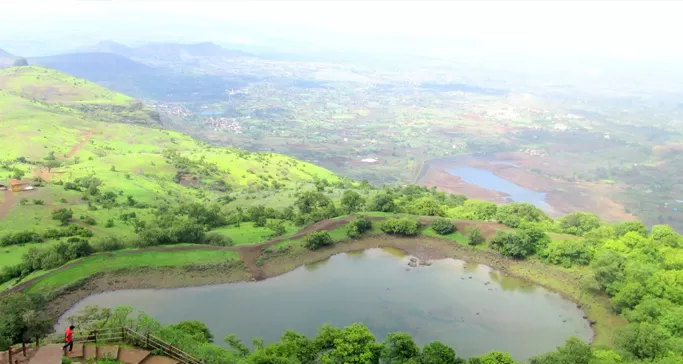
Ahupe Waterfalls:
This is a waterfall that is located in the vicinity of the wildlife sanctuary that offers a refreshing and exhilarating experience for visitors. It is formed by the Chandrabhaga River that cascades down from a height of about 80 meters. It is also a good place for swimming, picnicking, etc.
Gupt Bhimashankar:
This is a hidden temple that is located about 3 km from the main temple. It is believed to be the original site where Lord Shiva appeared as Jyotirlinga. It is a small and simple temple that has a lingam of Lord Shiva and a statue of Nandi Bull. It is also a good place for meditation and solitude.
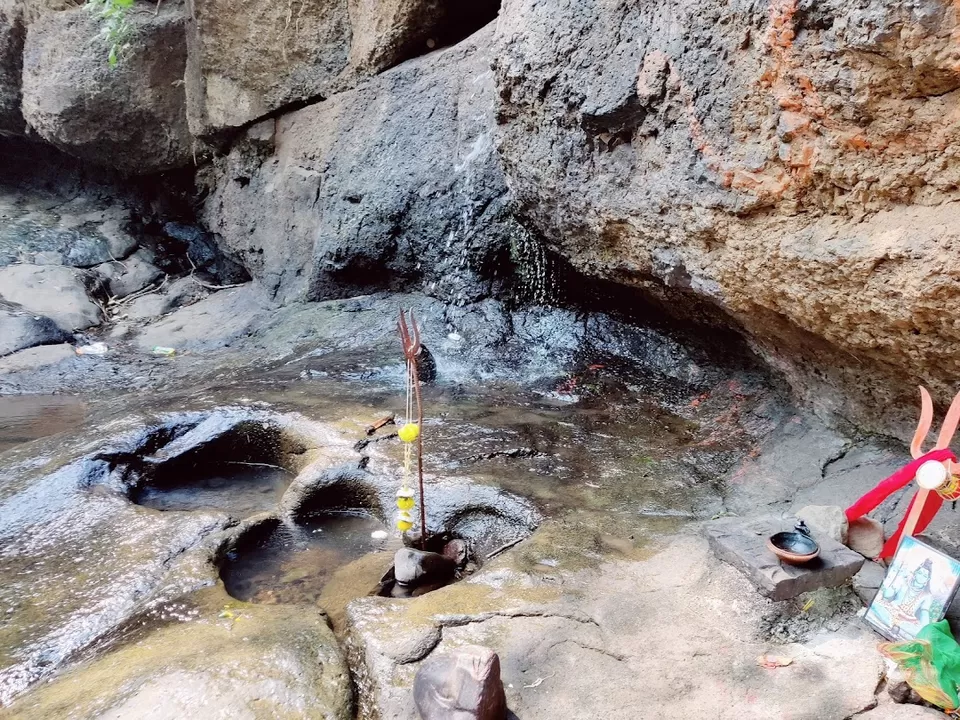
Sakshi Ganapati Temple:
This is a temple that is located about 2 km from the main temple. It is dedicated to Lord Ganesha, who is worshipped as Sakshi Ganapati, the witness of Lord Shiva’s manifestation. It is said that one should visit this temple before visiting the main temple, as Lord Ganesha will testify to Lord Shiva that the devotee has visited his shrine. The temple has a small idol of Lord Ganesha with four arms and a trunk pointing to the right.
Read about Devaditya's numinous road trip to Bhimashankar for a quick spiritual experience.
Bhimashankar Temple is a must-visit destination for anyone who wants to experience the divine and natural beauty of India. The temple is not only a place of worship but also a place of history, culture, and adventure. The temple offers various opportunities for the visitors to explore, learn, and enjoy. Whether you are a spiritual seeker, a nature lover, or an adventure enthusiast, you will find something to suit your taste and interest at Bhimashankar Temple.
We hope that this article has given you a comprehensive guide to Bhimashankar Temple and has inspired you to plan your next trip to this amazing place.
If you have any questions or feedback, please feel free to leave a comment below. We would love to hear from you.

